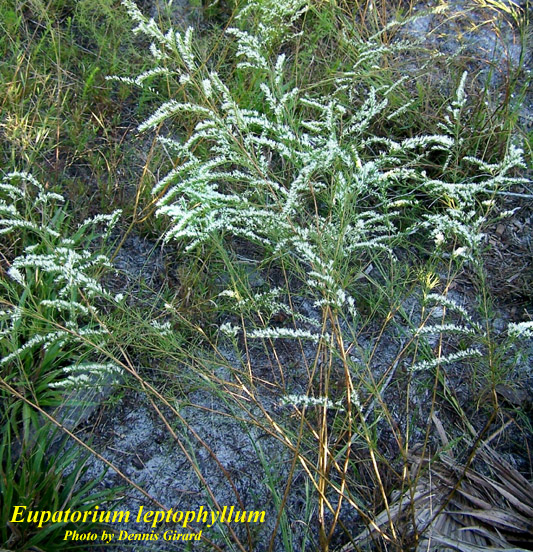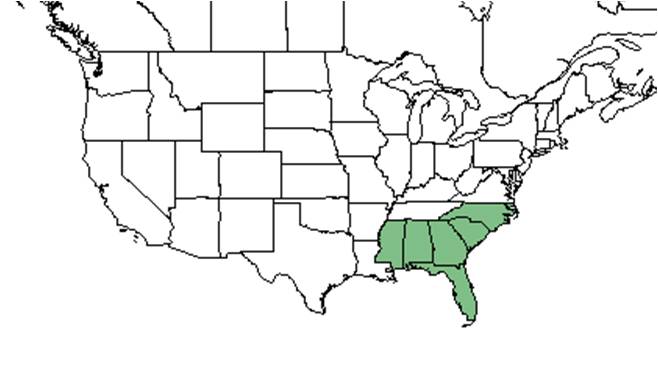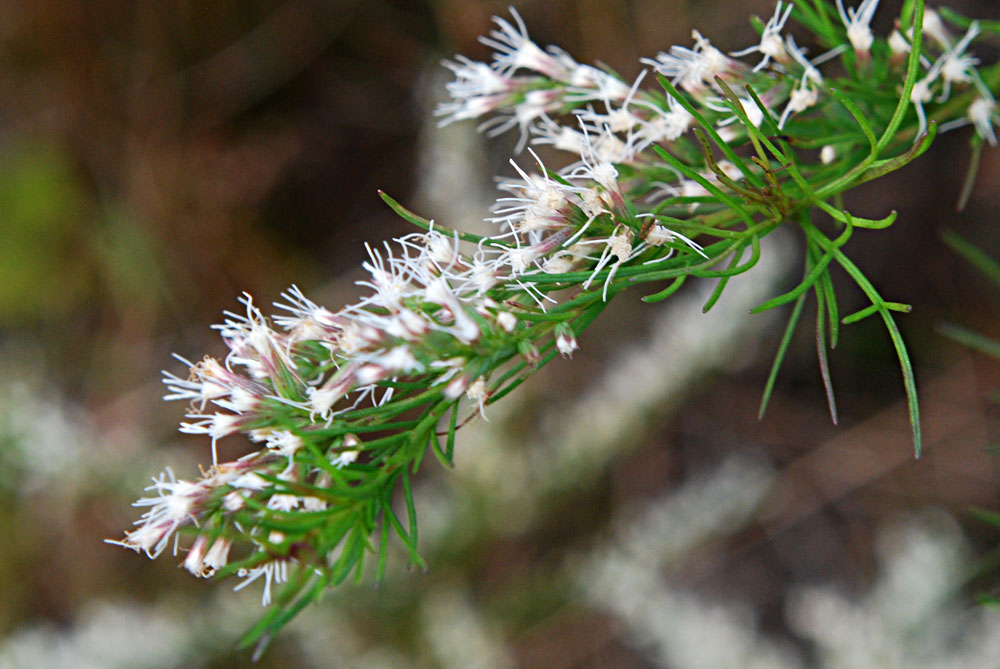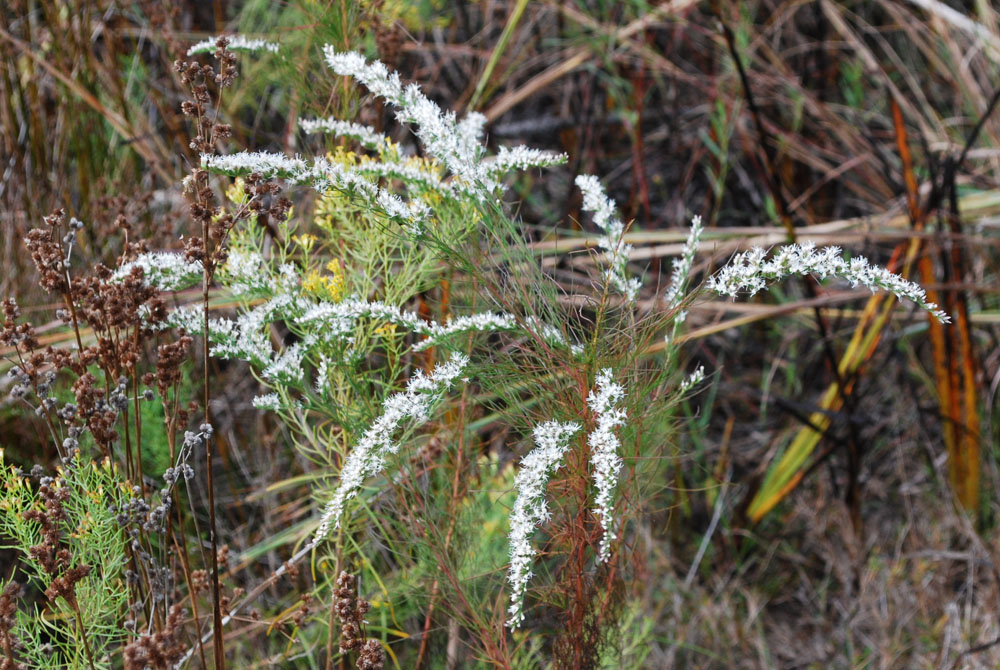Eupatorium leptophyllum
| Eupatorium leptophyllum | |
|---|---|

| |
| Photo by Dennis Girard, Atlas of Florida Vascular Plants | |
| Scientific classification | |
| Kingdom: | Plantae |
| Division: | Magnoliophyta - Flowering plants |
| Class: | Magnoliopsida - Dicotyledons |
| Order: | Apiales |
| Family: | Apiaceae ⁄ Umbelliferae |
| Genus: | Eupatorium |
| Species: | E. leptophyllum |
| Binomial name | |
| Eupatorium leptophyllum DC. | |

| |
| Natural range of Eupatorium leptophyllum from USDA NRCS Plants Database. | |
Common name: false fennel
Contents
Taxonomic notes
The genus Eupatorium honors a first century Greek king who discovered an antidote to a poison derived from this family[1].
Description
A description of Eupatorium leptophyllum is provided in The Flora of North America.
It is a short lived perennial with glabrous stems that reaches around 1 to 2 meters tall [2]. The young stems have few hairs and the leaves are finely divided[3].
Ecology
Habitat
It is found in wet areas, shallow water and at the edges of ponds [2]. Occurs wet, peaty soil such as in cypress ponds, along the shores of the ponds, floating islands in the ponds, wet peaty depression, mixed pine and oak forests (FSU Herbarium).
Phenology
Seed dispersal
Seed bank and germination
Fire ecology
Pollination
The following Hymenoptera families and species were observed visiting flowers of Eupatorium leptophyllum at Archbold Biological Station (Deyrup 2015):
Halictidae: Lasioglossum nymphalis, L. placidensis
Use by animals
Diseases and parasites
Conservation and Management
Cultivation and restoration
Photo Gallery
Flowers of Eupatorium leptophyllum Photo by Wayne Matchett, SpaceCoastWildflowers.com
Flowers of Eupatorium leptophyllum Photo by Wayne Matchett, SpaceCoastWildflowers.com
References and notes
Deyrup, M.A. and N.D. 2015. Database of observations of Hymenoptera visitations to flowers of plants on Archbold Biological Station, Florida, USA.

